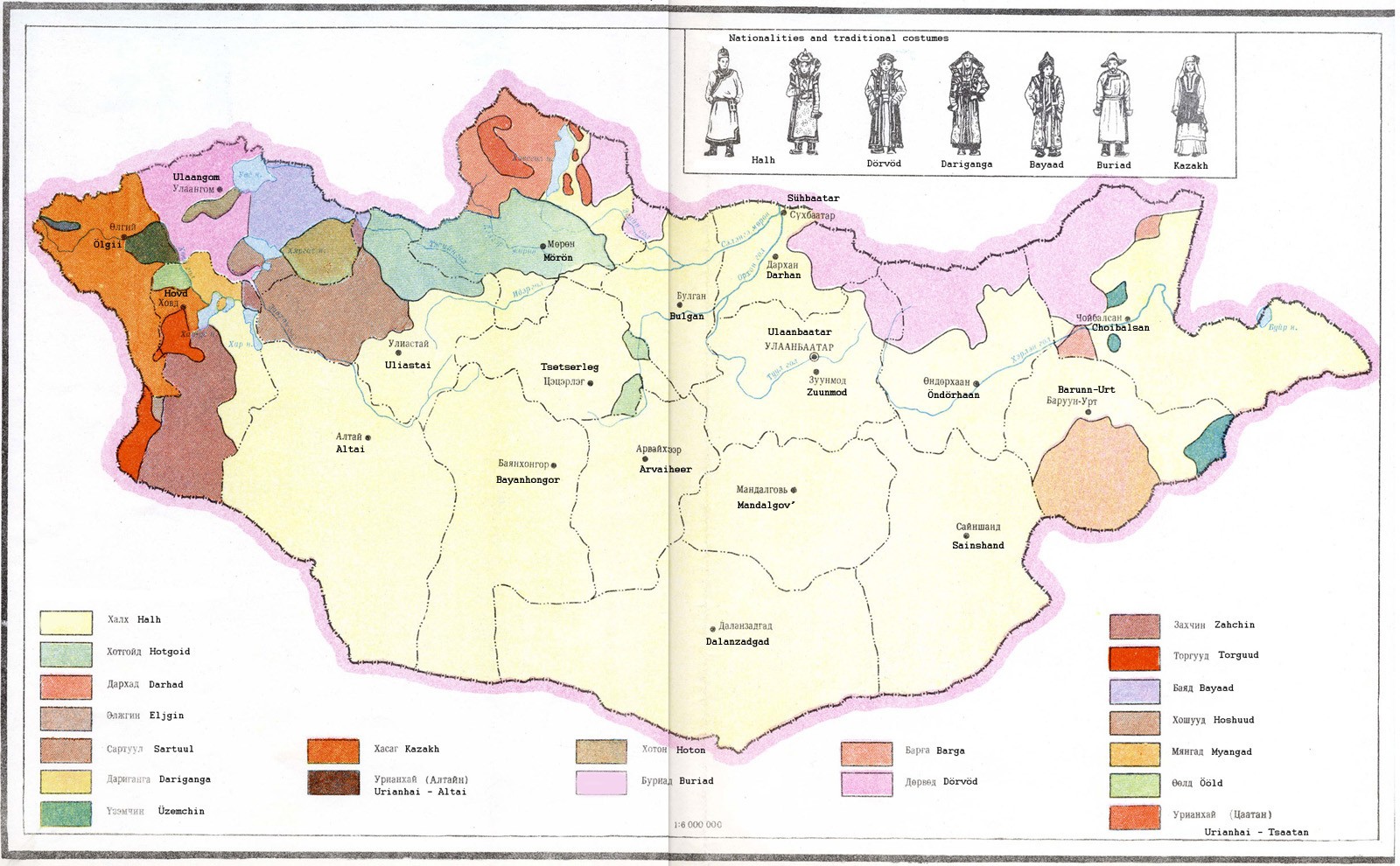Although most people probably think of Mongolia as being inhabited by a single ethnic group - the Mongols - this is wrong. Mongolia has many ethnic groups, but the Khalkha Mongols make up the majority of the population. There are about 20 to 24 recognized ethnic groups, nineteen of these, and one non-Mongol group (the Kazakhs) live in Mongolia itself (according to Rinchen's 1979 atlas.). This diversity comes from many years of nomadic life, political changes, and interactions across the Central Asian steppe.
The ancestors of modern Mongolians include people from groups like the Xiongnu, Xianbei, and Rouran. A key moment in creating a unified Mongolian identity was when Genghis Khan rose to power in the early 13th century. He brought together various Mongol and Turkic tribes into one empire, forming the vast Mongol Empire.
After the Mongol Empire declined, different Oirat tribes formed their own strong confederation. Over the years, many Mongolian and other ethnic groups experienced independence, conflict, and control by outside powers, especially the Manchu-led Qing dynasty. These historical events led to the development of unique dialects, cultural practices, and separate identities among groups, even though they share a common heritage. Migration, intermarriage, and political borders also played important roles in shaping today’s ethnic landscape.
Dominant Group:
Khalkha Mongols: This group is the largest in Mongolia, making up about 83.8% of the population. They are found all over the country, mainly in the central and eastern regions.
Major Minority Groups:
Kazakhs: This is the largest non-Mongolic group, making up about 3.8% of the population. They mostly live in Bayan-Ölgii, in the far west, where they are the majority. There are also smaller Kazakh communities in Khovd aimag and in the Nalaikh district of Ulaanbaatar. They speak Kazakh, a Turkic language, which is mutually unintelligible with Mongolian. As a religion, primarily adhere to Islam, in contrast to the predominantly Tibetan Buddhist Khalkha and other Mongol groups.
Dörvöd (Durbet): This Oirat Mongol group represents around 2.7% of the population and mainly lives in Uvs aimag in northwestern Mongolia. Oirat groups often have distinct variations in customs, traditional clothing styles, music (including epic poetry traditions), and rituals. Speak dialects of the Oirat language, which, while belonging to the Mongolic language family, are distinct from the Khalkha dialect. These dialects can sometimes be challenging for Khalkha speakers to fully understand.
Bayad: Another Oirat Mongol group, making up about 2.1% of the population, primarily found in Uvs aimag.
Buryat: This Mongol group accounts for about 1.7% of the population and has strong connections to the Buryats in Russia. They mostly live in the northern aimags of Dornod, Khentii, and Selenge. Speak the Buryat language, another Mongolic language distinct from Khalkha.
Zakhchin: An Oirat Mongol group that makes up 1.2% of the population, mainly located in Khovd aimag in western Mongolia.
Dariganga: This Mongol group makes up about 1.0% of the population and is mainly concentrated in Sükhbaatar aimag in the southeast.
Other Smaller Ethnic Groups (each generally less than 1%):
These groups collectively make up the remaining percentage (around 3.7%) of the population. They include various Mongolic and Turkic groups:
Uriankhai: This name can refer to several groups, including Tuvans (a Turkic group) and Mongol Uriankhai. They mainly live in Khovd and Bayan-Ölgii aimags.
Darkhad: This Mongol group is known for their shamanistic traditions and lives mainly in Khövsgöl aimag in the north.
Torguud: An Oirat Mongol group that is mostly found in Khovd aimag.
Ööld (Olot): Another Oirat Mongol group that mainly resides in Arkhangai and Khovd aimags.
Khoton: This group has debatable origins (they could be Turkic or Persian who adopted Mongolian language and culture) and mainly lives in Uvs aimag.
Myangad: An Oirat Mongol group that is mostly in Khovd aimag.
Üzemchin: A Mongol group that primarily lives in Dornod aimag in the east.
Barga: Another Mongol group found mainly in Dornod aimag.
Tuvans: A distinct Turkic group that lives mainly in Bayan-Ölgii aimag.
These differences in language, religion, history, and cultural practices are what define the distinct identities of Mongolia's minority groups, contributing to the country's rich and varied cultural landscape alongside the dominant Khalkha majority. Today, the ethnic groups in Mongolia mostly live together, but they often keep their unique cultural identities. They are usually found in specific geographic areas.

